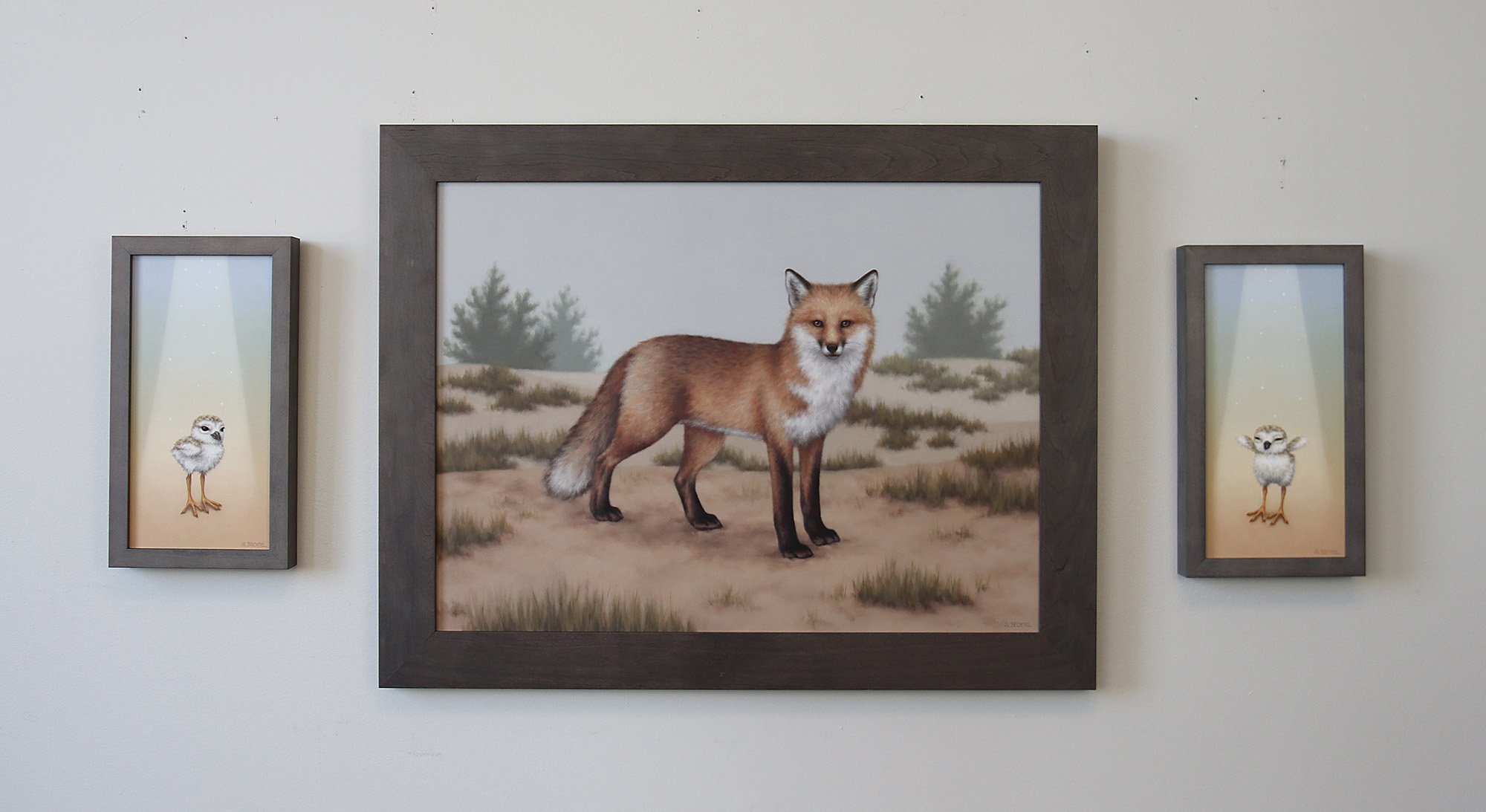Predator, Prey, and the Space Between
This series explores the tension between predator and prey, and how human presence - through development and intervention - reshapes those natural dynamics. Along the Jersey coast, this plays out in real time: as we alter the land, we also reshape the relationships between the animals that live there.
Piping plovers have lost much of their historic breeding ground due to coastal development along the Eastern seaboard. As a result, they’re now considered a threatened or endangered species in many areas. That development can’t be undone, but conservation groups and agencies like the NJDEP Division of Fish and Wildlife continue working to protect the few remaining nesting sites. Their efforts have led to the use of predator-proof nest exclosures - and in some cases, the culling of predators such as red foxes.
It raises complicated questions. Is it fair to punish species for doing what they’ve always done, simply because humans changed the rules? Should we place more value on a species just because it’s struggling. Or less value on one that’s thriving? There are no simple answers. But in these paintings, I wanted to reflect both the reverence we hold for some species, and the quiet dismissal of others.
These three paintings are currently on view at Jawbone Gallery as part of the group exhibition Neomenia. The show runs through May 26, 2025, in Cape May, NJ.

